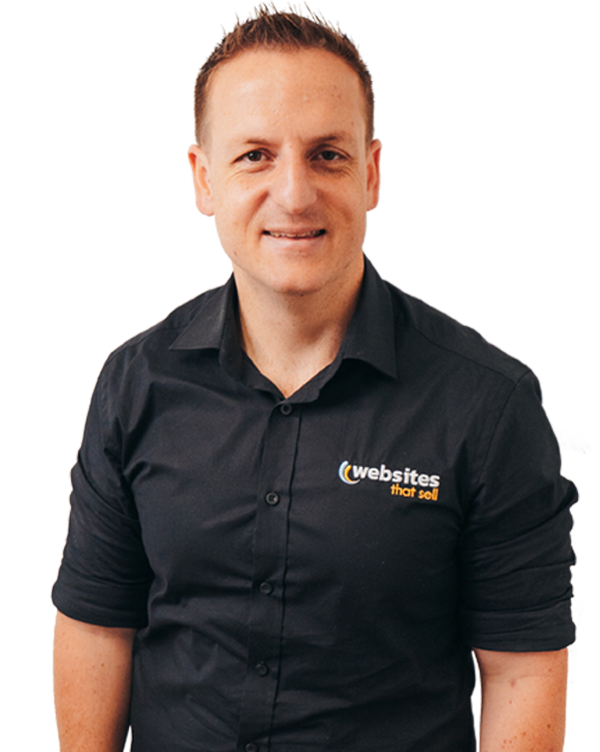If you have an eCommerce store, you MUST get one thing right.
You must get found online.
But here’s the problem: with thousands of businesses online, the competition is tough, and if you don’t know how to get your on-page right, these customers who find everything online will find everything but you.
And there’s no better way to get found than via SEO.
You may have launched your eCommerce website and started some paid ads campaigns on Google and Facebook.
But if that’s your only growth strategy, you are leaving opportunities on the table.
If your website is not optimised for search engines, you are missing out on free traffic.
You might think, I have an eCommerce store, and I don’t really need SEO. Paid ads and social media are working just perfectly for me.
But the fact of the matter is:
- 63% of all shopping begins online even if the purchase itself happens in the store.
- 66% of people perform some type of online research before making a purchase online.
- Leads from search engines have a 14.6% close rate, while outbound leads (ex. cold-calling, direct mail, etc.) have a 1.7% close rate.
- 86% of people ignore paid banner ads, choosing to only click on organic search results.
Source: Intergrowth
In this article, we will examine 8 essential on-page SEO strategies that will help you rank your eCommerce site fast & long term.
PLUS you’ll get our full OnPage SEO Checklist for your shopping site at the end of this guide.
So let’s dive in.
What is On-page SEO?
You may have heard SEO gurus talk about the importance of keywords, meta descriptions, internal links, URL structure and image optimisation.
All that is actually on-page or on-site SEO.
On-page SEO is the process of optimising content for search engines and humans.
So you get that Google juice bringing new traffic.
This is different from the other two SEO musketeers - technical and off-page SEO.
While technical SEO is the way your website is structured, off-page SEO refers to backlinks, social signals and branded mentions of your website.
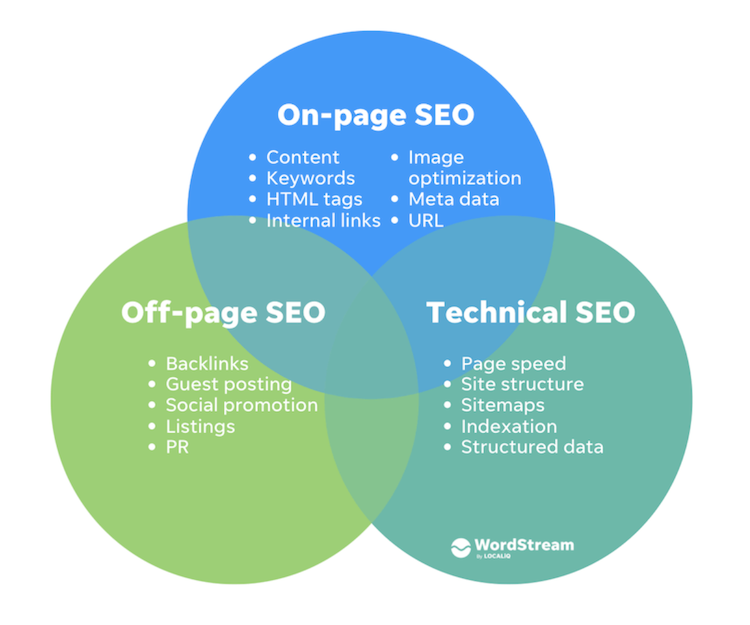
Source -WordStream
Importance of On-Page SEO
Although a lot of things have changed in the world of SEO - Google’s approach is simple.
With the vast amount of information available online, Google’s ranking systems sorts information and present the most relevant and useful information in seconds.
Keywords play a major role in ranking. So when you are creating any page, you need to use the right keywords.
RELEVANCE OF CONTENT
Here's how Google assesses relevance of content:
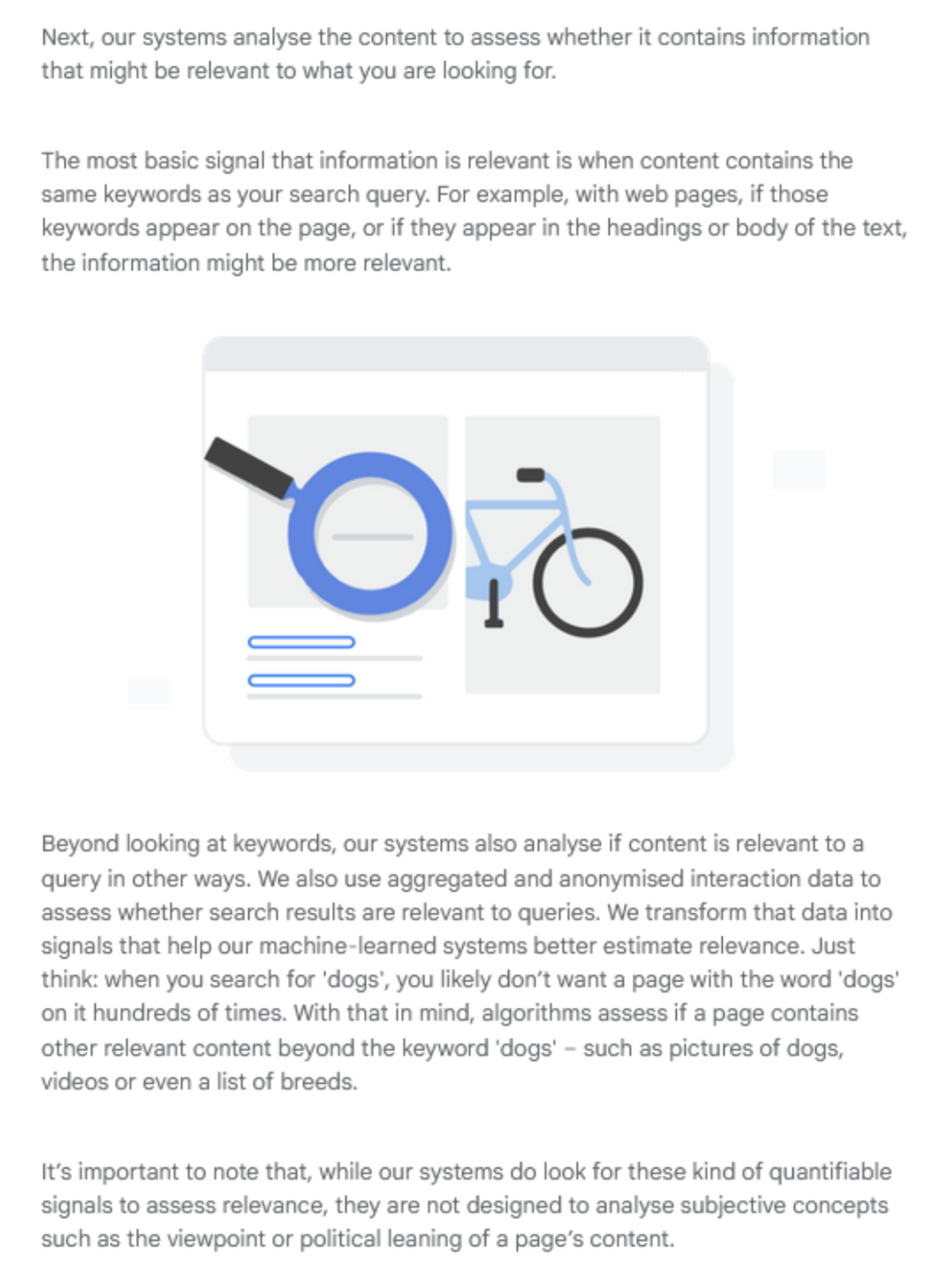
According to Backlinko, 5% of traffic goes to the first page of search results and the top three Google search results get 54.4% of all clicks.
So if you want to improve your CTR, you need to focus your efforts on getting relevant.
But how and what do you do to improve on-page SEO?
8 Essential On-Page SEO Elements
Keyword Research
Performing keyword research correctly applies to every website, no matter the industry.
The makings of a good keyword
When we talk about keyword research, you need to check these things:
- Keyword difficulty - how hard it is to rank organically for the search term. The higher the KD, the harder it will be to rank higher
- Search volume - the average number of monthly searches for a given keyword over a 12-month period.
There are four main types of keywords:
- Informational - searchers are looking for information
- Transactional - searchers are ‘looking to buy’
- Commercial - searchers are investigating products, brands or services
- Navigational - searchers are looking to find a page or a website
To determine keyword intent - you can simply use SEMrush’s Keyword Magic tool.
Look under the “intent” section and you will be able to see the terms highlighted:
- C - Commercial
- N - Navigational
- I - Informational
- T - Transactional
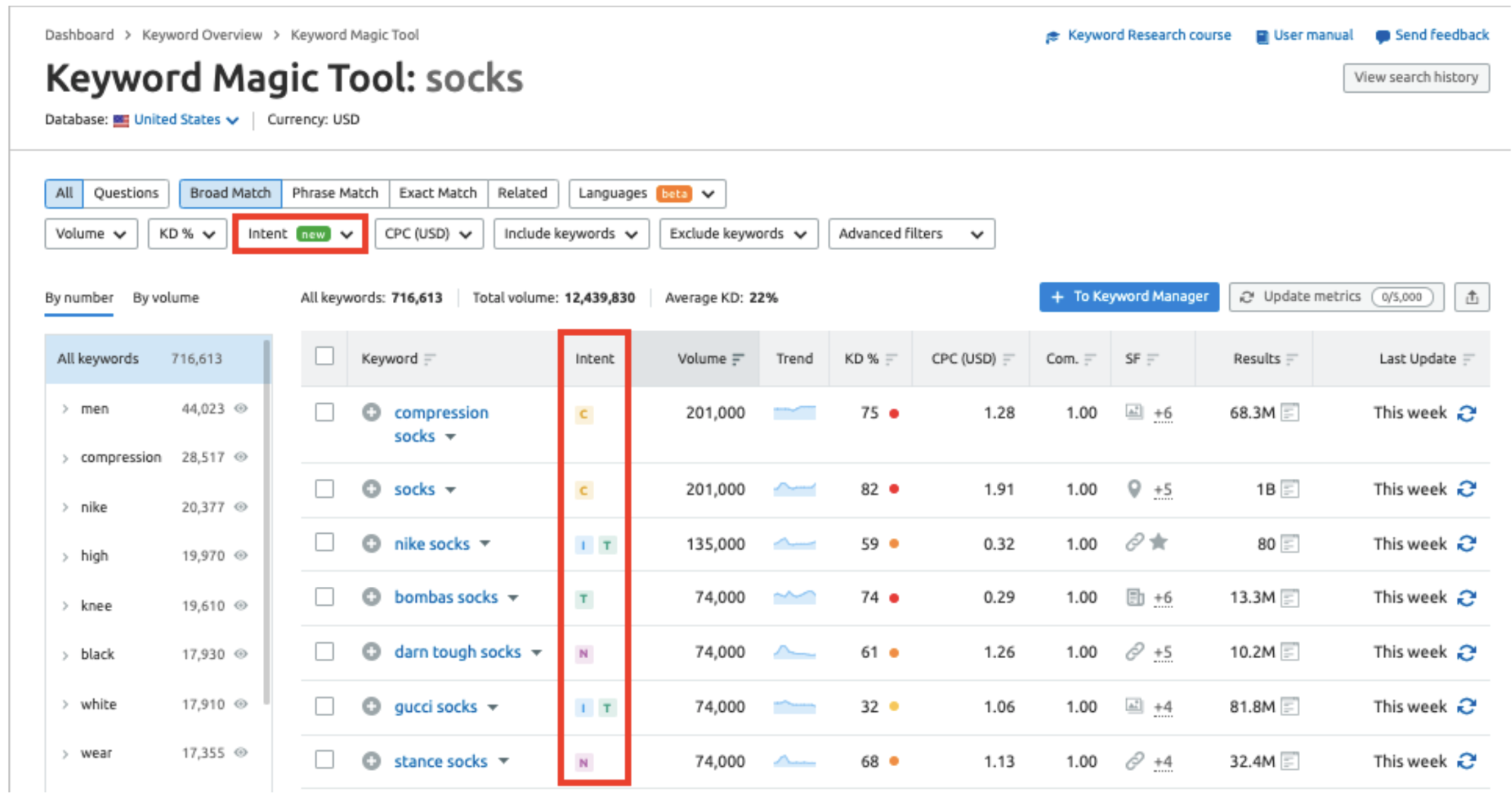
This is not just the only way, you can even go to “Organic research” or “Domain overview” to find the keywords by their “intent.”
Choosing the right keyword may look complicated, but it's actually pretty easy.
You need to look out for keywords with:
- High search volume
- Low keyword difficulty
- You can create content related to that keyword
- Use a mix of long-tail and head keywords
For a tutorial on eCommerce keyword research, we highly recommend you study this guide: What are the best types of eCommerce Keywords to Target for SEO?
Content
Google gives huge importance to E-E-A-T.
Which stands for Experience, Expertise, Authoritativeness and Trustworthiness.
If you read the Search Quality Rater Guidelines document, you will find that it is referenced almost 130 times.
Even though your website is not for Google, it is for your users.
The best way to meet your user's needs is by understanding their requirements.
This is where E-A-T comes in, if you want your pages to rank, the content needs to be:
- Reliable - provides accurate information and delivers value to the reader
- Useful - contains reliable information
- Readable - content is written for humans and broken by relevant images, headings

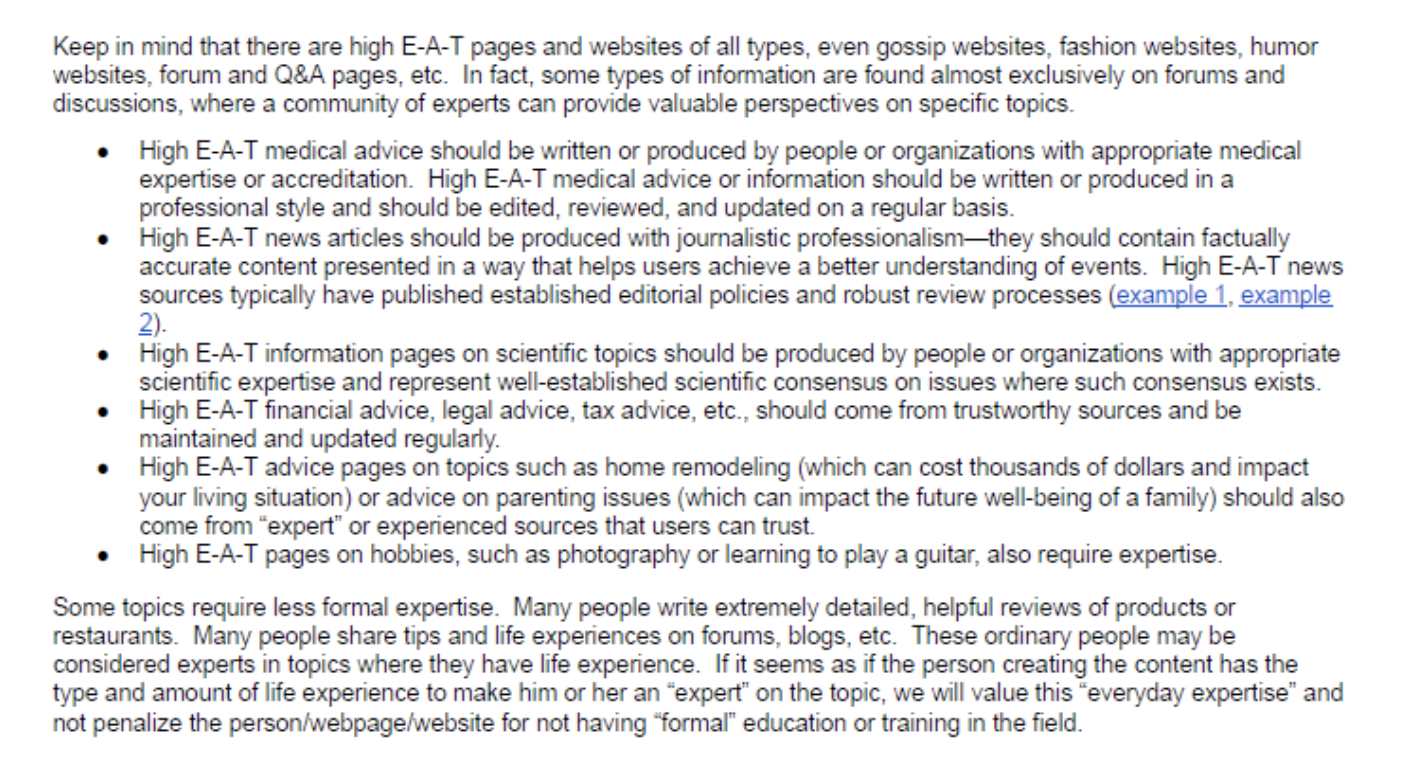
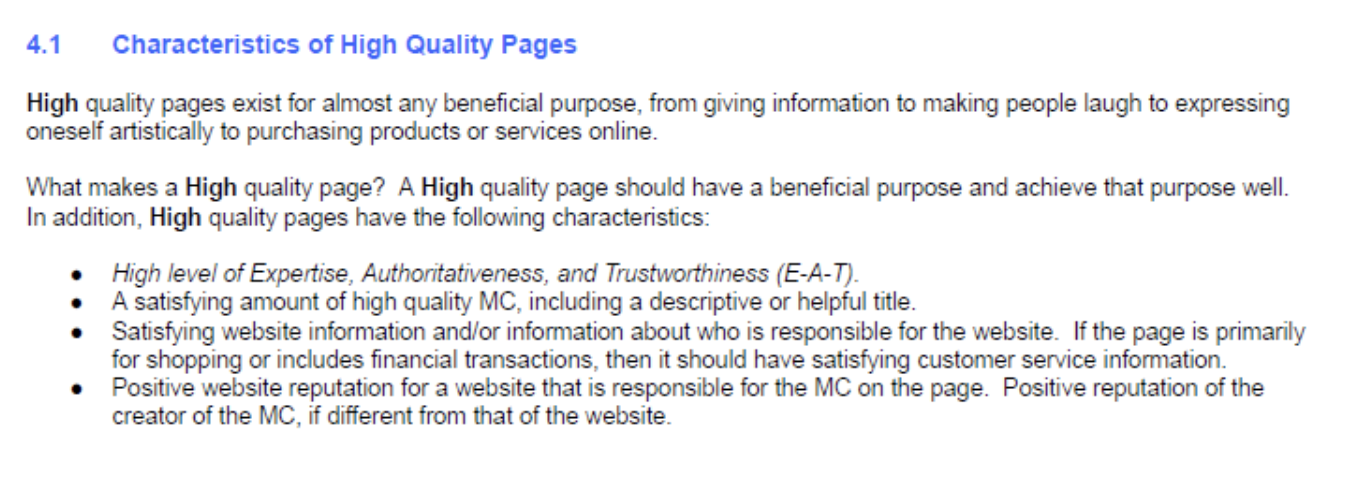
Source: Searcher Quality Evaluator Guidelines So once you have done your keyword research, you can create content matching user intent. For example, let’s say you sell video games, consoles and pop culture merchandise, your website will have dedicated:
- Product pages
- Category pages
- Blog pages
- FAQs
Your content strategy would be focused on:
- product pages related to gaming consoles, merchandise offered by different brands like Marvel, Disney and DC
- pages for bestselling games for Xbox, Playstation and Nintendo
- Pages for PC games and console games
- Reviews and FAQ section for different products
- How-to guides for Xbox, PlayStation and Nintendo
And so forth, the list can go on and on.
The main idea is to create content matching the buyer's intent.
And creating quality content, blogs, product descriptions, shipping details, returns and refunds, etc gives Google the signal that your eCommerce store is trustworthy and you have the expertise and authority in the subject matter. View our content marketing guide for eCommerce stores here.
Tip:
- Use the keywords and their variation in page title, description, page title, URL, headings, subheadings and first 100 words of the copy.
- Use the keyword in the image file name and image alt text
- Often people focus on optimising product pages and forget the category pages. Our advice is to not ignore the category pages and focus on using the right keywords, images or other visual assets to make these pages engaging.
- Include call-to-actions
Images and Videos
Using high-quality visual assets - product images, videos and infographics make your page engaging.
Your customers will rely on images and videos to understand your products.
When working with images, make sure:
- The filename contains the keywords you are targeting
- Use compressed images - next-gen image formats like WEBP or AVIF take up less space and load faster. There are a variety of free and paid tools to change image format and compress images.
- Enlist a professional photographer to get beautiful pictures and showcase your products aesthetically and evoke positive emotions
- Use alt text to explain the purpose of the image
- You convey value to the user
When working with videos, make sure:
- Use mp4 format
- Compress videos files before uploading them or upload them to Youtube and embed it on the website
- Select the right video size ensuring the videos are suitable for all screen sizes
Title Tags
The title tag defines the title of the web page.
It is displayed in the SERPs and is one of the most important ranking factors.
It is also known as page title and meta title. For example, in the image below, you can see the URL, title tag and meta description.
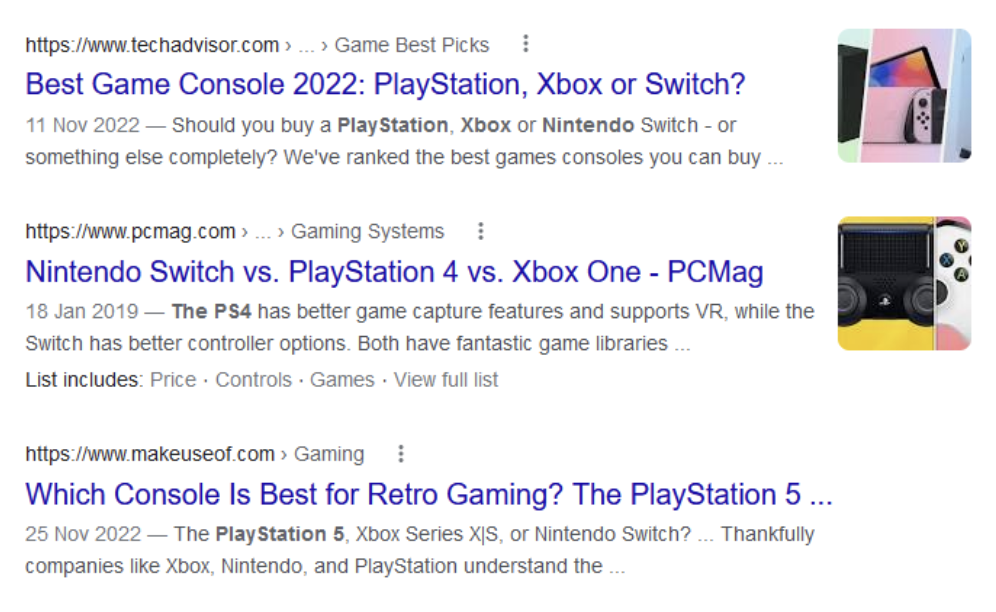
The title tag incentivises the users to click on your website.
How to write engaging title tags?
- Use your primary keywords in the title tag
- Avoid using more than 60 characters in the title tag
- Write unique titles for all pages
- Use content that makes the users click
- Avoid keyword stuffing
Headers
Headings (h1, h2 or h3) are used to organise information conveying the hierarchy and key concepts.
They are used to guide the reader and present information sequentially.
<h1> is the title of the page explaining what the content is about. You can only have one H1 on a page
<h2> are headings used to present the main concepts of your content. You can have multiple H2s on the page.
<h3> is sub- headings and further breaks up the content under the <h2>
<h4> <h5> <h6> if you need to divide the content into more sections, use h4, h5 and h6 tags.
When using the tags, don't skip the hierarchy. You need to include all tags sequentially and can’t skip a level in the hierarchy.
Meta Descriptions
A meta description is the summary of the page that you can see in search results. Think of it as an elevator pitch for your content. You get only 160 characters to sell your content as best as you can.
It is the first thing a user will see, and writing a good copy is crucial to get people clicking.
Tips for writing effective meta descriptions:
- Keep it under 160 characters
- Use the primary keywords
- Communicate the value to your reader
- Use active voice to persuade users to take action and click on your content
- Use unique meta descriptions for all your pages
- Ensure your meta description matches the content of the page
Links
Internal links are the process of using hyperlinks to other important pages of the website.
While external links take your users to other domains, internal links keep the user on your website for longer. Internal links are beneficial because:
- They encourage users to spend more time on your website
- Improves the indexability and crawlability
- Helps search engines understand your website
- Makes it easier for users to find related products and information related to the products
- Passes authority from your high-ranking pages to your new pages
When you use internal links, make sure to use keywords in your anchor text.
For a full guide on building external links for your ecommerce store visit this page here.
Page URLs
Use SEO-friendly URLs to make it easier for humans and bots. The best practice for URL SEO is to have:
- Well-defined site architecture
- Using hyphens between words instead of underscore, spaces or other characters
- Use lowercase letter
- Avoid using URL parameters and dynamic URLs
- Use keywords in your URL
For example:
This one is a search-friendly URL
While this one is not
Other SEO Elements To Consider
Although technical SEO is out of scope for this article, the technical aspects of your website can hamper the rankings of your web page.
So if your rankings are not taking off, these are other things you should consider.
- Does your website have a responsive design?
- Is it optimised for mobile users?
- What’s your core web vital score? Are your pages loading fast enough in the field and the lab?
- Is google able to crawl your website?
- Have you implemented schema markups like product, review, and price schema?
- Is your website optimised for local SEO?
- Can readers share your content on social media? Have you implemented Open Graph meta tags?
On-Page SEO Checklist
Make sure your website ticks the boxes below and your on-page SEO game will always be on point.
SITE AUDIT
- conduct a site audit to identify issues with title tags, meta descriptions, h1 tags, etc
KEYWORD RESEARCH
- check keyword difficulty
- check search volume
- find relevant keywords
KEYWORD PLACEMENT
- use keywords in the title tag, headers, meta description and content
CONTENT AUDIT
- perform a content audit to identify opportunities
- fix issues with existing content
- remove duplicate or low-quality content
TITLE TAG
- identify and fix duplicate or missing title tags.
- title tags are less than 60 characters
- contains the head keyword
- conveys value and is unique
- optimise title tag
META DESCRIPTIONS
- identify and fix duplicate or missing meta descriptions
- should be less than 160 characters
- includes CTA and contains the keyword
HEADING
- identify and fix missing or multiple H1 tags
- only 1 H1 tag
- Can have multiple H2 tags
- Organises information hierarchically
IMAGE
- use a descriptive alt text and filename
- evokes emotion
- relevant to the content
- uses webp or avif format
- Compressed
- Suitable for different screen sizes
INTERNAL LINKS
- Use internal links
- Include keywords in anchor text
- Use unique anchor texts for all pages
CONTENT
- Original
- Accurate information
- Written for humans
- Delivers value
- Fresh
- Includes important keywords matching the searcher’s intent
- Includes headings, subheadings, images and videos
- Include product pages, category pages and blogs
So there you have it, our full cheat sheet to improve your on-page SEO.
It takes time and effort to get better at it.
But if you concentrate on the SEO best practices, it gets easier over time.
There may not be a foolproof recipe for SEO success, but we know the ins and outs of eCommerce SEO so well that we can help you get results fast.
If you're ready to take your business to the next level, get in touch with us today.
You can learn more about our eCommerce SEO services here or:

